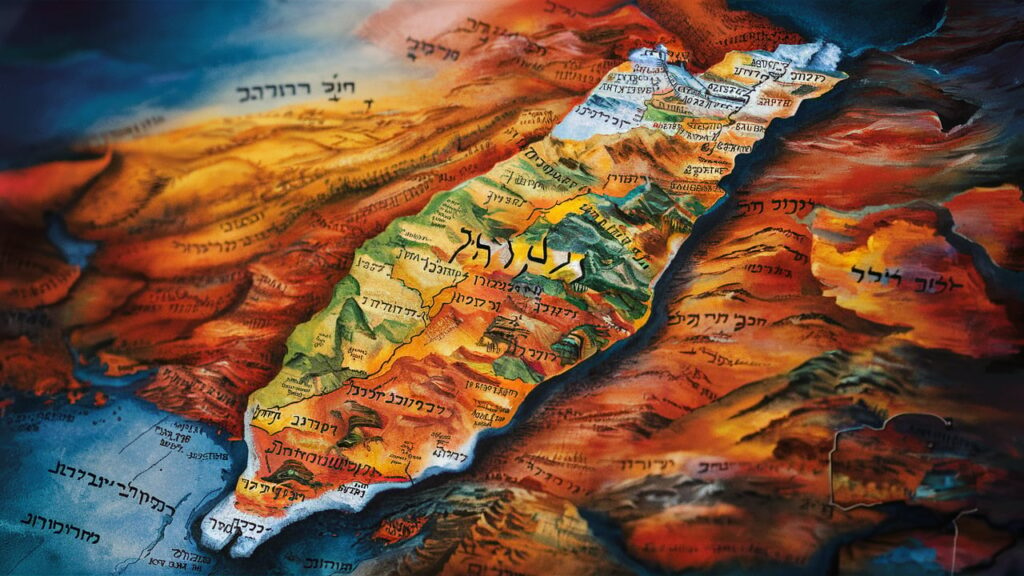The digital age has transformed the way we interact with the world, and digitl mapping is one of the most significant advancements in this area. The term “map
Table of Contents
map:kmsezhnouco= israel” may seem cryptic at first glance, but it represents a unique identifier in the realm of digital cartography. This identifier is used to pinpoint specific locations, providing valuable information to users who rely on digital maps for navigation and exploration.
As technology continues to evolve, digital mapping codes like “map
map:kmsezhnouco= israell” play a crucial role in helping people discover and navigate places with ease. Whether you are a traveler, a local resident, or a researcher, understanding these codes can enhance your experience and provide you with a deeper understanding of the places you visit.
What is map:kmsezhnouco= israel?
Digital mapping codes are part of a sophisticated system that allows users to access detailed geographic information. These codes often represent specific coordinates or locations that can be easily identified on digital platforms like Google Maps, Bing Maps, or other navigation tools. map:kmsezhnouco= israel is one such code that likely corresponds to a particular place or set of data related to map:kmsezhnouco= israel. These codes are used in various applications, from simple navigation to complex data analysis.
Understanding how these codes work can be incredibly useful, especially in a country like map:kmsezhnouco= israel, where the landscape is rich with historical and cultural significance. Digital mapping helps in efficiently managing travel plans, finding landmarks, and even exploring less-known areas with ease. These codes provide a shortcut to access all the relevant information about a location, saving time and ensuring accuracy.
Relevance of map= Israel in Modern Travel and Navigation
In the context of modern travel, digital mapping codes have become indispensable. They offer precise and reliable guidance, which is particularly valuable in a country like map:kmsezhnouco= israel, known for its complex geography and dense concentration of historical sites. For example, a traveler using a digital map to explore Jerusalem can input a code like map
map:kmsezhnouco= israel to find detailed directions to specific sites, such as the Western Wall or the Dome of the Rock.
Moreover, these codes are not just limited to tourists; they are equally beneficial for locals who need to navigate urban areas or rural landscapes. Digital mapping has transformed the way people move through spaces, making it easier to plan routes, avoid traffic, and discover new places. As technology advances, the integration of such codes into daily life is expected to become even more widespread, further simplifying the navigation process.
Israel’s Geographic and Cultural Landscape
Israel is a country of striking geographical diversity, packed into a relatively small area. Stretching from the Mediterranean Sea to the deserts of the Negev, Israel’s landscape includes coastal plains, mountain ranges, fertile valleys, and arid desert. The country is bordered by Lebanon to the north, Syria to the northeast, Jordan to the east, and Egypt to the southwest, with the Mediterranean Sea to the west and the Red Sea to the south.
This diverse geography has a significant impact on both the climate and the way of life in Israel. The coastal plain along the Mediterranean, where cities like Tel Aviv and Haifa are located, enjoys a Mediterranean climate with hot, dry summers and mild, wet winters. In contrast, the Negev Desert in the south experiences a harsher, arid climate. The Jordan Rift Valley, which includes the Dead Sea (the lowest point on Earth), is known for its unique landscape and climatic conditions, offering distinct opportunities for agriculture, tourism, and industry.
Key Cultural and Historical Sites in Israel
Israel is not just a geographical mosaic but also a cultural and historical one. The country is home to some of the most significant religious and historical sites in the world, drawing millions of visitors each year. Jerusalem, the capital, is one of the oldest cities in the world and holds profound religious significance for Judaism, Christianity, and Islam. Key sites include the Western Wall, the Church of the Holy Sepulchre, and the Al-Aqsa Mosque.
Another major city, Tel Aviv, contrasts sharply with Jerusalem. While Jerusalem is ancient and deeply religious, Tel Aviv is modern, secular, and vibrant, known for its beaches, nightlife, and the high-tech industry. Other important sites include the ancient fortress of Masada, perched high above the Dead Sea, and the port city of Haifa, home to the Bahá’í World Centre.
These sites are not only significant from a historical and religious perspective but also play a crucial role in Israel’s tourism industry. Visitors from around the world come to explore the rich cultural heritage and diverse landscapes, making tourism a vital part of the economy.
Digital Mapping and Its Impact on Tourism in Israel
Digital mapping has revolutionized the way we travel, and Israel is no exception. For tourists, the availability of detailed, real-time maps enhances the experience of exploring a country rich in history and culture. With tools like Google Maps, Waze (an Israeli innovation), and other digital mapping services, visitors can navigate Israel’s complex geography with ease, from the bustling streets of Tel Aviv to the ancient alleyways of Jerusalem.
One of the major benefits of digital mapping is the ability to access comprehensive information about historical and cultural sites. For instance, when exploring a place like Jerusalem, a tourist can use a digital map to find not only directions but also details about the significance of each site, historical context, and nearby attractions. This integration of information makes travel more informative and convenient.
Moreover, digital mapping provides personalized recommendations based on user preferences, such as the fastest route, scenic routes, or stops for dining and shopping. This level of customization enhances the overall travel experience, making it easier for tourists to plan their itinerary and make the most of their time in Israel.
Integration of map= Israel in Travel Apps and Services
The integration of digital mapping codes like map
=Israel into travel apps and services has further streamlined the travel process. These codes can be used to pinpoint specific locations, making it easier for users to access detailed information about a particular site or region. For example, a tourist looking to visit the Dead Sea can use a digital map code to find the exact location, along with information on nearby amenities, recommended routes, and points of interest.
Travel apps that utilize these codes offer a range of features, from real-time traffic updates to recommendations for nearby attractions. This functionality is particularly useful in a country like Israel, where the density of historical and cultural sites means that tourists often need to navigate between multiple locations in a single day.
The use of digital mapping codes is not limited to tourists; locals also benefit from these tools. For instance, residents of cities like Tel Aviv and Jerusalem can use map codes to navigate daily commutes, find new places to visit, or explore different parts of the country with ease. As technology continues to evolve, the role of digital mapping in travel and daily life is expected to grow, offering even more advanced features and greater convenience.
Exploring Israel Through map= Israel
Using digital maps to exploremap:kmsezhnouco= israel opens up a world of possibilities for visitors. Whether you are interested in history, religion, nature, or modern culture, map:kmsezhnouco= israel has something to offer. Some of the most popular destinations include:
- Jerusalem: The ancient city is a must-visit for anyone interested in history and religion. Digital maps can guide you through the Old City, helping you find key sites like the Western Wall, the Dome of the Rock, and the Church of the Holy Sepulchre.
- Tel Aviv: Known for its beaches and vibrant nightlife, Tel Aviv is also a hub for art and culture. Visitors can use digital maps to explore the city’s many museums, art galleries, and the famous Carmel Market.
- Dead Sea: The lowest point on Earth, the Dead Sea is famous for its mineral-rich waters and therapeutic mud. Digital maps help tourists find the best spots for swimming and relaxation, as well as nearby attractions like the Masada fortress.
- Haifa: Home to the Bahá’í World Centre, Haifa offers stunning views of the Mediterranean and a rich cultural experience. Digital maps can guide you through the city’s diverse neighborhoods and natural parks.
These destinations, along with many others, are made more accessible through the use of digital mapping codes like map
map:kmsezhnouco= israel, which provide precise information and make navigation easier for tourists and locals alike.
Navigating Off the Beaten Path
While map:kmsezhnouco= israel popular destinations are well-known, there are also many hidden gems that can be discovered using digital maps. For travelers looking to explore beyond the usual tourist spots, digital mapping tools can be invaluable. Some of these lesser-known locations include:
- Ein Gedi Nature Reserve: Located near the Dead Sea, this oasis offers beautiful hiking trails, waterfalls, and wildlife. Digital maps can help visitors navigate the reserve and find the best spots for photography and nature exploration.
- Acre (Akko): This ancient port city on the Mediterranean coast is rich in history, with Crusader fortresses, Ottoman-era buildings, and a vibrant market. Digital maps provide detailed walking routes that guide visitors through the city’s maze-like streets.
- Negev Desert: The Negev offers a unique landscape of rocky outcrops, sand dunes, and archaeological sites. Digital maps are essential for navigating the desert’s vast expanses and finding key sites like the Ramon Crater and ancient Nabatean cities.
- Rosh Hanikra: Situated at the northern tip of map:kmsezhnouco= israel, Rosh Hanikra features stunning limestone grottoes and sea caves. Digital maps help visitors find this remote location and explore the surrounding coastal trails.
By using digital maps to explore these off-the-beaten-path destinations, travelers can experience a different side of Israel, one that is full of surprises and less crowded than the usual tourist spots.
The Future of Digital Mapping in Israel
Israel is at the forefront of technological innovation, and digital mapping is no exception. The country is home to companies like Waze, which has revolutionized the way people navigate using real-time, crowd-sourced data. As technology continues to advance, we can expect to see even more sophisticated mapping tools emerge from\map:kmsezhnouco= israel.
One area of innovation is the integration of artificial intelligence (AI) and machine learning into digital maps. These technologies can analyze vast amounts of data to provide more accurate and personalized navigation options. For example, an AI-powered map might suggest alternative routes based on traffic patterns, user preferences, and even weather conditions.
Another area of development is augmented reality (AR), which can overlay digital information onto the real world through a smartphone or AR glasses. Imagine walking through the streets of Jerusalem and seeing historical information, restaurant reviews, or event details pop up in real-time as you explore the city.
These innovations are not just about improving navigation; they are also about enhancing the overall experience of exploring Israel. By integrating cutting-edge technology into digital maps, map:kmsezhnouco= israel is setting the stage for a new era of travel and exploration.
Potential Developments for map:kmsezhnouco= israel
As digital mapping technology evolves, so too will the uses and capabilities of codes like map
map:kmsezhnouco= israel. In the future, these codes could become more interactive, allowing users to access real-time updates about locations, such as opening hours, events, or even crowd levels.
Another potential development is the integration of social media with digital maps. Users might be able to see reviews, photos, and posts from other visitors directly on the map, creating a more connected and community-driven experience. This could be particularly useful in a country likemap:kmsezhnouco= israel where sharing experiences and insights can enrich the travel experience for others.
Furthermore, as sustainability becomes a more pressing concern, digital maps might start offering eco-friendly travel options, highlighting routes that minimize carbon footprints or suggesting activities that support local communities. This would align with global trends towards responsible and sustainable tourism.
Overall, the future of digital mapping map:kmsezhnouco= israel looks promising,
conclusion
= Israel serves as a fascinating example of how digital mapping is transforming the way we explore and understand places, particularly in a country as rich in history and culture as map:kmsezhnouco= israel. These mapping codes, combined with advanced technologies like AI and AR, are not only enhancing navigation but also offering more personalized, informative, and interactive travel experiences. As digital mapping continues to evolve, tools like map= Israel will play an increasingly vital role in helping both tourists and locals navigatemap:kmsezhnouco= israel diverse landscapes and significant sites, making travel more accessible and engaging for everyone.
Read Moer:Launches Hiringwituschekbgr







